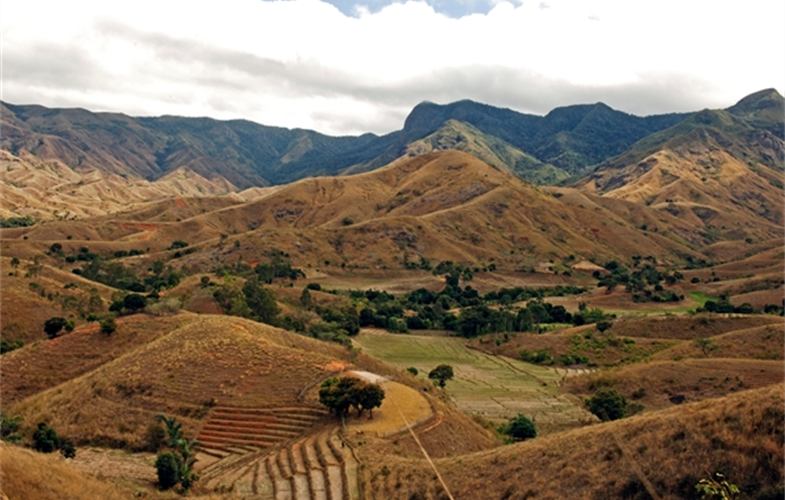A new study finds that the planet's wildlife is increasingly crumbling under the pressures of human activity.
The "human footprint" examines the impact of the human population, human access (roads and rail), human land-uses (agriculture, mining), and electrical power infrastructure (utility corridors). The most recent dataset on the human footprint maps the accumulated impact of these activities on the land's surface, allowing researchers to visualize the overlap between human impact and wildlife activity. From research conducted at the Wildlife Conservation Society, the University of Queensland, and other groups, it's been found this human footprint puts intense pressures across the range of a staggering 20,529 terrestrial vertebrate species alone.

Deforested Landscape, Madagascar (Julie Larsen Maher/WCS)
Though the new data quantifying the proportion of terrestrial vertebrates affected by human activity might be sobering, new potentials of improving our understanding of species vulnerability and conservation can also be assessed. Senior author James Watson of WCS and the University of Queensland states:
“Given the growing human influence on the planet, time and space are running out for biodiversity, and we need to prioritize actions against these intense human pressures. Using cumulative human pressure data, we can identify areas that are at higher risk and where conservation action is immediately needed to ensure wildlife has enough range to persist. ”
The expansiveness of the human footprint essentially guarantees that our impact will cross paths with the range of thousands of species. Sometimes, the impact is so large that it can drive species to extinction due to habitat loss, hunting, and much more. However, despite the already existing repercussions of the human footprint, there is an opportunity to decrease any future consequences. By establishing handprints, which lessens the damaging implications of our everyday lives, we can enact positive change that allows our environment to foster healthy and biodiverse ecosystems.
Read more about the study here:
